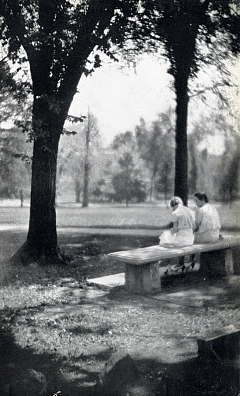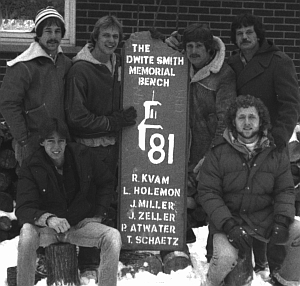 In Paul Bechtel’s Wheaton College: A Heritage Remembered, it is remarked that “Jonathan Blanchard drove himself unsparingly. He traveled, lectured, organized and promoted agencies for social justice, and labored in the cause of Christian higher education. Never a physically robust man, he suffered from chronic dyspepsia and periods of weakness. In the hope that his health might be improved, the trustees granted him a six-month leave of absence in the spring of 1864, enabling him to fulfill a long-held desire to see territory west of the Mississippi. With sixteen-year-old Charles at his side, he set out by covered wagon across Illinois, and pressed on beyond the great river. Since many wagon trains were moving in the same direction, it was easy for father and son to link up with one of them. Having passed through Nebraska, Colorado, Wyoming, Montana, and Idaho, they came finally to Salt Lake City, where the Mormons were building their city and rearing the great temple on the square.”
In Paul Bechtel’s Wheaton College: A Heritage Remembered, it is remarked that “Jonathan Blanchard drove himself unsparingly. He traveled, lectured, organized and promoted agencies for social justice, and labored in the cause of Christian higher education. Never a physically robust man, he suffered from chronic dyspepsia and periods of weakness. In the hope that his health might be improved, the trustees granted him a six-month leave of absence in the spring of 1864, enabling him to fulfill a long-held desire to see territory west of the Mississippi. With sixteen-year-old Charles at his side, he set out by covered wagon across Illinois, and pressed on beyond the great river. Since many wagon trains were moving in the same direction, it was easy for father and son to link up with one of them. Having passed through Nebraska, Colorado, Wyoming, Montana, and Idaho, they came finally to Salt Lake City, where the Mormons were building their city and rearing the great temple on the square.”
History’s only records of this grand expedition are the personal letters that Jonathan and Charles wrote home from the frontier. Due to the economic hardships of the time, the promise of gold seemed to add an alluring element to their journey. As an idealistic teenager, young Charlie wrote that he was becoming enamored with pioneer life and proclaimed, “I think it hardly possible to think of going back to Illinois for the remainder of the years I am allotted here on earth.” Obviously, the events of Charles’ life unfolded much differently and he went on to attend Wheaton College and later serve as its second president for the remainder of his life. Below are excerpts from letters written during their journeys out west.
Letter from Charles Blanchard to “Friends at Home” (Platte River. 6/19/1864)
“Some of our boys have found gold here which is in little grains very fine in sand. I heard one say he had made 20 dollars a day mining in no better diggings than these but we must go on until we find a place where we can pick up the pieces for I have got my eye on a place 60 miles this side of Omaha…”
Letter from Jonathan Blanchard to his wife, Mary (Virginia City, Montana. 8/9/1864)
“They have dug down to what they call here ‘pay dirt’ and today or tomorrow expect to try and wash out some gold. But the claim cost little and we expect little more than expenses from it.”


